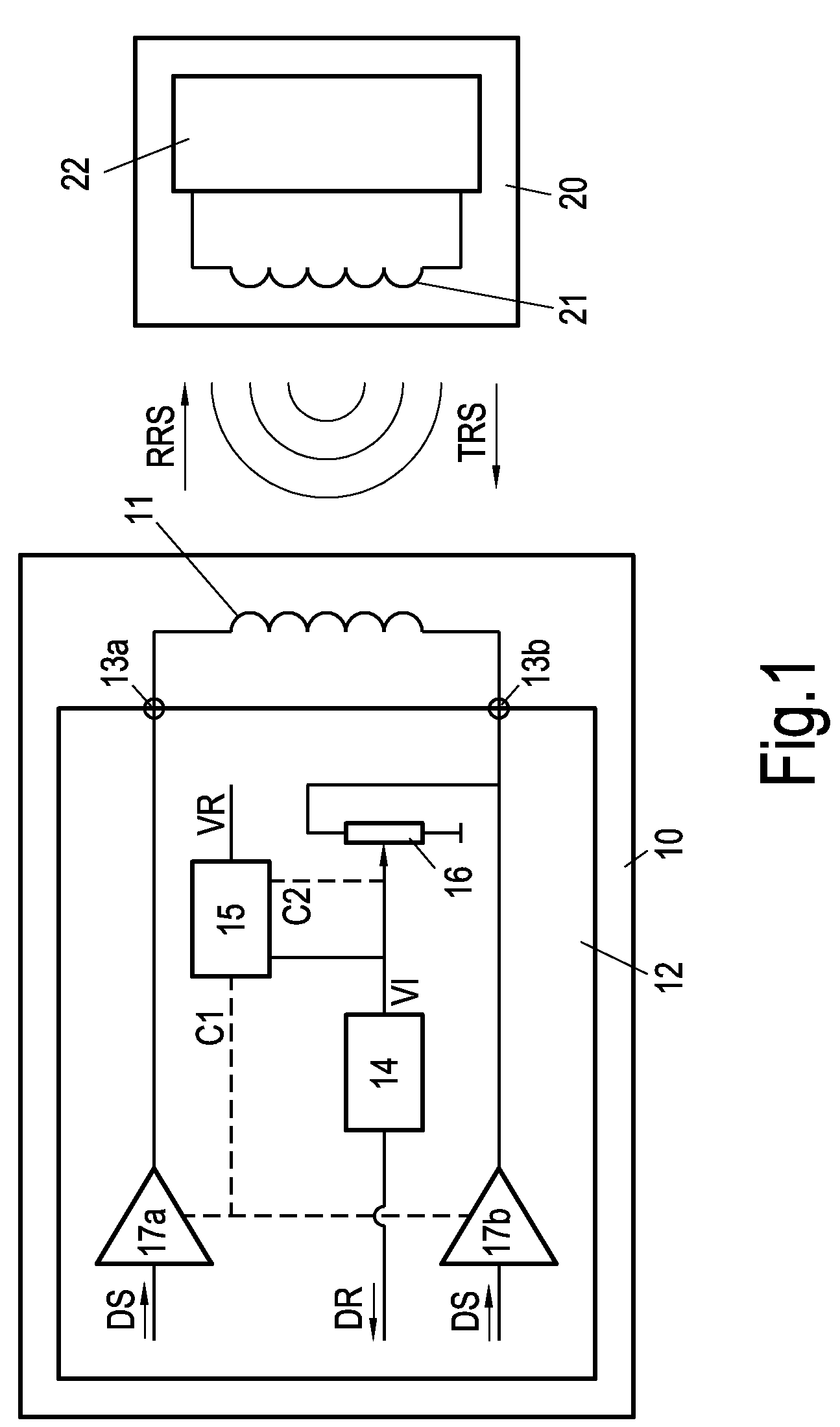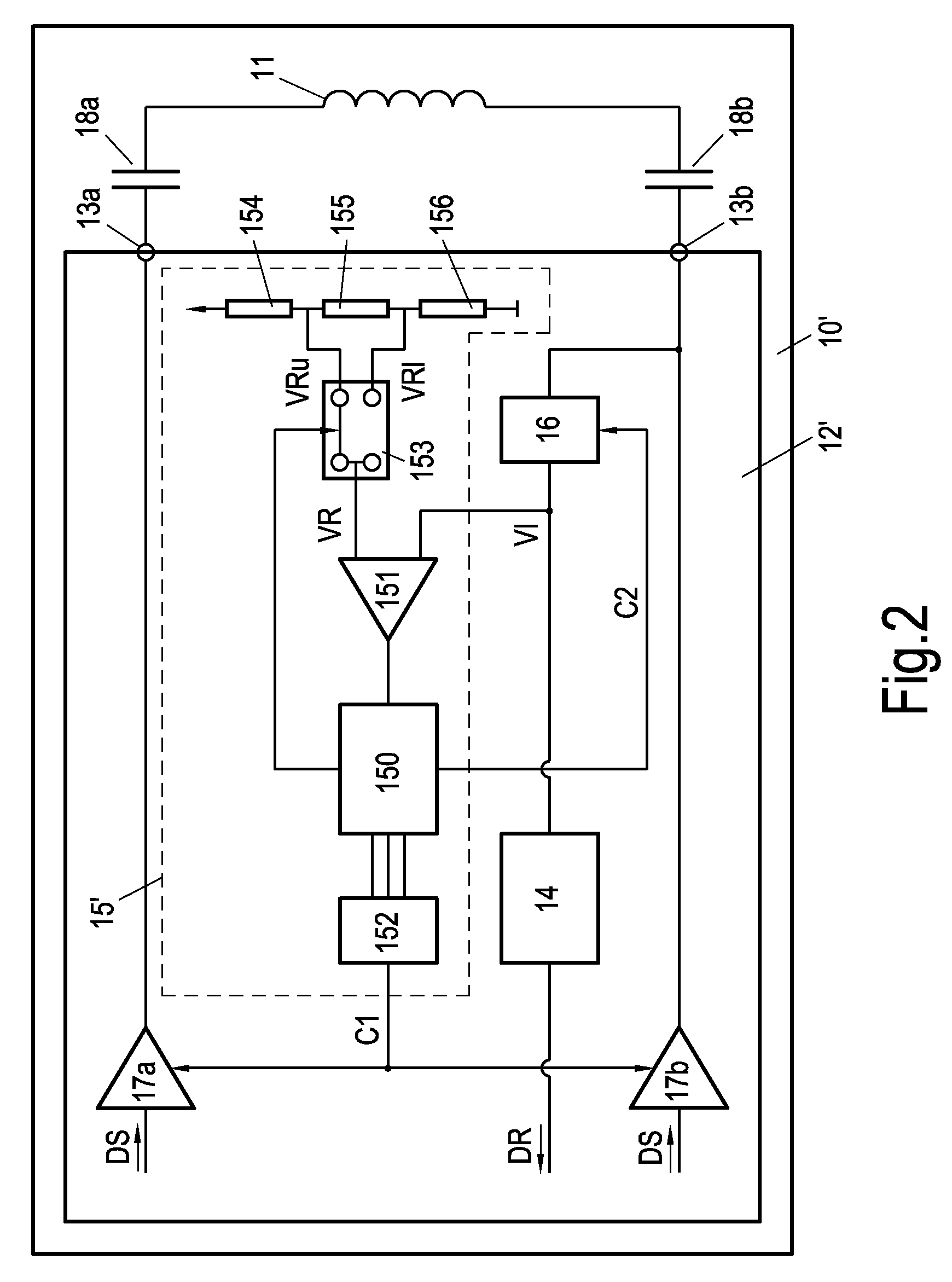Electronic circuit for a contactless reader device
a reader device and electronic circuit technology, applied in the field of electronic circuits for reader devices, can solve problems such as failure to deal with the input stage of a reading device, and achieve the effects of reducing the input voltage, preventing damage to the sensitive receiving module, and increasing the degree of freedom
- Summary
- Abstract
- Description
- Claims
- Application Information
AI Technical Summary
Benefits of technology
Problems solved by technology
Method used
Image
Examples
Embodiment Construction
[0027]FIG. 1 shows a reader device 10 in communication with a transponder 20, which transponder 20 comprises a transponder antenna 21 and a transponder circuit 22. Accordingly, the reader device 10 comprises an antenna 11 and an electronic circuit 12. The electronic circuit 12 itself is connected to the antenna 11 by means of connections 13a, 13b. Inside the electronic circuit 12 there are a receiving module 14, a control module 15, a damping element 16 and a first and a second amplifier 17a, 17b. The first connection 13ais connected with an output of the first amplifier 17a. Accordingly, the second connection 13b is connected with an output of the second amplifier 17b. In addition, the second connection 13bis connected with an input of the receiving module 14, with the damping element 16 being arranged in-between. The input of the receiving module 14 is furthermore connected to an input of the control module 15. Outputs of the control module 15 are shown in dashed form. One output ...
PUM
 Login to View More
Login to View More Abstract
Description
Claims
Application Information
 Login to View More
Login to View More - R&D
- Intellectual Property
- Life Sciences
- Materials
- Tech Scout
- Unparalleled Data Quality
- Higher Quality Content
- 60% Fewer Hallucinations
Browse by: Latest US Patents, China's latest patents, Technical Efficacy Thesaurus, Application Domain, Technology Topic, Popular Technical Reports.
© 2025 PatSnap. All rights reserved.Legal|Privacy policy|Modern Slavery Act Transparency Statement|Sitemap|About US| Contact US: help@patsnap.com



